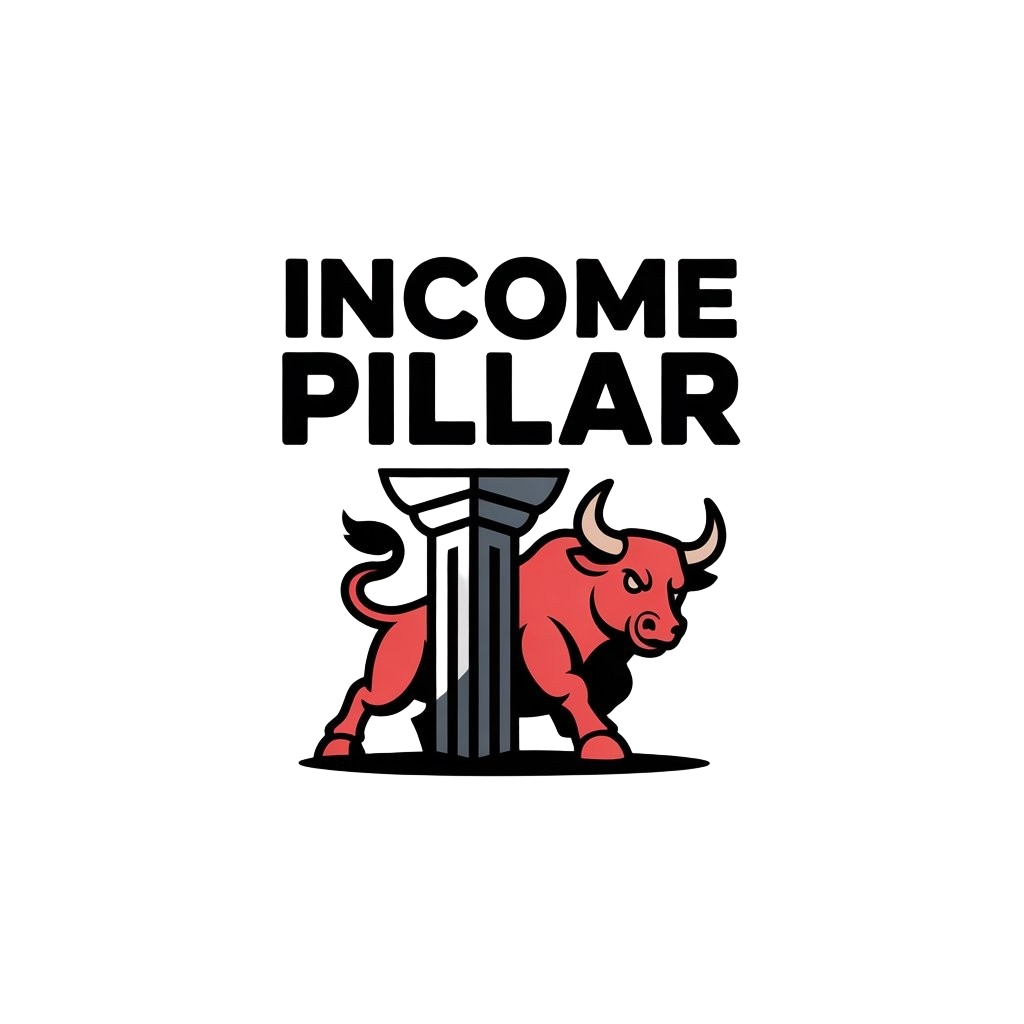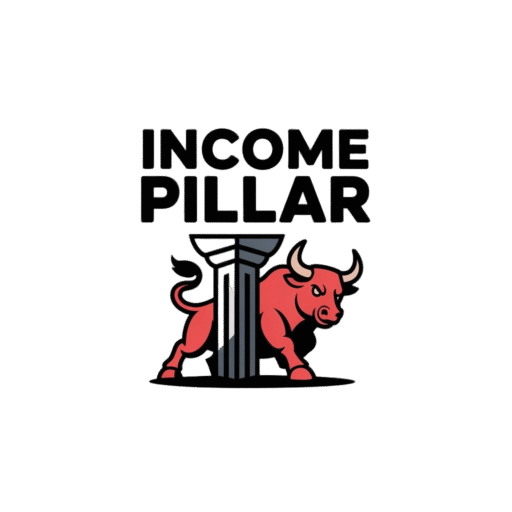Introduction
Financial independence means having enough money to cover your living expenses without needing a job. This state frees you to focus on your goals and live your life with less worry about money. Achieving this requires careful planning and smart money management.
This article explains different strategies to help you become financially independent. It covers important steps such as investing wisely and creating a practical financial plan that suits your needs. You will find clear advice, examples, and tips to guide you toward financial freedom.
Define Your Financial Independence Goal
Setting a clear and specific financial independence goal matters more than you might think. Without a defined target, it’s easy to drift or lose motivation. Think about what financial independence actually means to you. Is it covering basic needs, or maintaining a lifestyle with extra comforts and travel? Pinning down a goal forces you to be realistic about numbers and your future priorities.
To identify how much money or assets you need, start by estimating your living expenses at the level you want to sustain. That includes rent or mortgage, food, utilities, insurance, plus things like hobbies or occasional treats. Once you know what that monthly figure looks like, you can envision the total amount needed to generate that income reliably.
Ask yourself some tough questions to clarify your criteria:
- What lifestyle do I want to support without working? Simple and frugal, or more comfortable?
- Will my expenses change over time, like health care or family support?
- How much risk am I willing to accept in using investments to generate income?
- Do I want to plan for inflation or unexpected costs?
Answering these forces some honesty about your values and expectations. Your goal might shift as you gather more info, but having something concrete shapes your entire approach. It’s not just a number—it’s a roadmap. This chapter is about setting that road’s first milestone clearly.
Determine Your Monthly Expenses
Before you can map out your financial independence, you have to understand where your money currently goes. Take time to track every expense for at least a month—bills, groceries, rideshares, coffee stops, everything. Even the small things add up in surprising ways. You might underestimate what discretionary spending really costs.
Include fixed necessities like rent, utilities, and insurance. Then add variable costs such as dining out, entertainment, and hobbies. The key is accuracy. Guessing won’t help when you build your plan. Apps, spreadsheets, or a simple notebook might help, but the act of recording sharpens awareness.
Once you see the patterns, you begin to understand your true cost of living. This step might reveal some spending habits you didn’t expect or let you see where Lifestyle Inflation quietly creeps in. Also, consider what you could realistically cut or adjust when you rely solely on your assets.
Set a Target Asset Amount
Knowing your monthly expenses guides you, but you need a bigger picture — the total amount of assets to sustain those costs long term. Start by multiplying your annual expenses by a factor to account for longevity, inflation, and uncertainties.
For example, many use the “4% rule,” which says you can withdraw 4% of your investments each year without running out. So, if your annual expenses are $40,000, your target assets might be around $1 million. But, I think it’s wise to add some buffer—maybe 10 to 20% more—to handle market fluctuations or unexpected needs.
Investment returns vary; inflation chips away at purchasing power. Your target isn’t static. You might adjust it as you age or circumstances change. Think of this number as flexible but directional. This calculated approach anchors your financial independence goal in reality, not wishful thinking.
Build a Budget and Manage Expenses
Creating a budget isn’t just about writing down numbers. It’s about understanding where your money comes from and where it goes. When you stick to a budget, you gain control over your spending rather than letting expenses sneak up on you. This control often leads to more savings—though it’s rarely a simple process. You might find yourself slipping sometimes or forgetting to track small purchases, but the key is to keep at it.
Tracking your money flow closely can reveal surprises. Maybe you didn’t realize how many streaming services you pay for each month or how often you grab takeout. Cutting back on these small, recurring costs can add up. Try cooking at home more, checking which subscriptions you actually use, or waiting before buying something new to ask yourself if you really need it. These little choices make a difference over time.
Avoiding debt is crucial here. Debt often grows faster than your budget can manage and can erode your progress. Focus on paying off credit cards quickly and steer clear of new high-interest loans. Think of the budget as a tool for freedom, not just restriction. It keeps your expenses clear, and your savings growing—slowly but surely.
Make a Monthly Budget Plan
Start with the basics: jot down all sources of income first. Then, list your monthly expenses in clear categories. Splitting your money into needs, wants, and savings can keep things balanced. The 50/30/20 rule is a simple approach to try. About 50% of your income covers essentials like rent, food, and utilities. Around 30% goes to discretionary spending—activities, hobbies, non-essentials. The remaining 20% goes straight into savings or paying off debts.
This rule isn’t perfect for everyone. Some months might demand more for needs, others less for wants. The point is to create a flexible framework that helps you pause before overspending. Seeing everything laid out can be eye-opening. You might discover you’re spending too much on entertainment or not saving enough. Adjust as you go—your budget isn’t set in stone.
Cut Unnecessary Costs
Reducing expenses doesn’t mean cutting out joy or comfort. It’s about making intentional decisions. For instance, cooking meals at home instead of eating out can easily save hundreds each month. That coffee shop habit? Brewing your own coffee might feel less indulgent but adds up money saved. Subscriptions are another area to check—streaming platforms, magazines, gym memberships. If you don’t use them often, cancel or pause them.
Shopping smart also helps. Use lists to avoid impulse buys, compare prices, and consider buying second-hand. Sometimes, spending a bit more for quality means replacing items less often. Mindful spending isn’t always about buying less—it’s about buying in ways that reflect your priorities and goals. Often, I catch myself questioning a purchase by asking, “Do I want this now or later?” This small pause can prevent unnecessary spending and nudges your savings upward.
Increase Your Income Sources
Diversifying your income streams is an often overlooked but crucial part of reaching financial independence faster. Relying on just one salary can feel safe, but it also limits your growth potential. Adding other sources means money comes from different places, and if one drops off, you’re not stuck.
Side jobs can be simple to start. Think tutoring, dog walking, or even delivering groceries. These usually need little to no upfront cash and fit around your main work schedule. Freelancing offers something slightly different — writing, graphic design, coding, or consulting if you have skills others need. It’s not all sunshine; side work takes time, and sometimes energy, to juggle.
Passive income sounds like a dream, but it’s not purely hands-off. Creating streams here—through investments, rental properties, or online businesses—calls for upfront effort or capital. Setting up a rental unit or an e-commerce website is work and money initially, yet over time, these can flow without daily attention.
Building your skill set ties these ideas together. The better your skills, the easier to find freelance gigs or design income-generating projects. If you ever hesitate, ask yourself: what’s one skill I could develop that might bring in extra cash within months? Sometimes the best step is just picking something manageable and starting there.
Choose Effective Investment Strategies
Picking the right investment strategy can feel overwhelming, especially with so many options out there. But really, it comes down to understanding your risk tolerance and investment horizon. If you’re comfortable with some ups and downs and have a longer timeline—say a decade or more—stocks might be good. They usually offer higher returns, but with more volatility. On the flip side, bonds generally bring steadier, smaller gains and could suit those closer to their goals or less willing to risk big fluctuations.
Active investing means trying to beat the market by picking individual stocks or timing the market. It demands time, research, and sometimes a bit of luck. Passive investing, like buying index funds, simply tracks the market’s overall performance. For many beginners, passive investing tends to be less stressful and less costly. But some find the hands-on approach of active investing more engaging—even if it doesn’t always pay off.
Thinking about your goals helps you match investments wisely:
- If you want steady income, bonds or dividend-paying stocks can fit well.
- For growth over decades, stocks or real estate might be better, but they come with swings.
- Real estate can also diversify your holdings but requires more effort and isn’t as liquid as stocks.
Choosing investments isn’t just about chasing the highest return. It’s also about how much risk you’re comfortable with and how long you can wait. So, are you okay watching your portfolio drop some days if the longer-term upsides look promising? Reflect on that—it influences your whole approach.
Develop a Solid Financial Plan
Creating a financial plan means more than just jotting down numbers. It starts with budgeting—knowing exactly where your money goes each month. You might be surprised how often small expenses sneak in and disrupt your goals. Tracking spending carefully helps spot those leaks.
Saving should follow naturally once you see where you stand. Think of saving not just as putting money aside but as a strategic step towards bigger goals. Even modest amounts add up over time, especially if you can consistently save a bit every paycheck.
Investing comes next. You don’t have to be an expert to get started. Simple options like low-cost index funds or employer retirement plans can build wealth steadily. The tricky part? Managing risks and being patient as markets fluctuate.
Debt management can’t be ignored here. High-interest debts, especially credit cards, tend to slow progress, so prioritize paying them off. But don’t forget that not all debts are equal—some might be strategic, like a mortgage or a student loan.
One thing I learned—plans aren’t set in stone. Life changes. Income, expenses, or goals might shift unexpectedly. That’s why reviewing and tweaking your plan regularly is, well, crucial. A financial plan that sits untouched is a plan that probably won’t deliver.
Set Clear Financial Milestones
Breaking down big financial goals into smaller milestones can really help you stay on track. Instead of aiming directly for “saving a million,” set targets like “save $5,000 in six months” or “pay off one credit card by year-end.” These smaller wins feel rewarding and keep motivation from fading.
If you’re like me, it’s easier to stay engaged when you see tangible progress. These checkpoints create a sense of achievement, reminding you that those huge ambitions aren’t just vague ideas but reachable steps.
Try listing milestones with deadlines and clear amounts. You’ll often find that your sense of control improves—and maybe even your discipline—by knowing exactly what to focus on next. What milestone could you set today that feels doable?
Review and Adjust Your Plan Regularly
Your financial plan should feel alive, not paused. Checking it once a year, or whenever something big happens—like a job change, a move, or a family event—can keep things relevant. Without these updates, your plan could slowly drift out of sync with your real situation.
Sometimes you might realize your previous goals no longer make sense, or your budget needs tweaking because expenses shifted unexpectedly. That’s normal. A rigid plan can lead to frustration rather than freedom.
Ask yourself: Does this plan still serve me? Am I moving forward or just maintaining? Adjustments don’t mean failure—they mean being honest and practical. Staying flexible keeps your financial independence journey on a steady course, even when life throws curveballs.
Avoid Common Financial Pitfalls
Most people slip into familiar mistakes on their path to financial independence. Overspending is one of the biggest traps. It’s easy to justify small purchases here and there, but those add up faster than you might expect. Maybe you tell yourself it’s just one dinner out or that new gadget—but does it really stop there?
High-interest debt is another culprit. Credit cards or payday loans can spiral out of control if you’re not careful. Sometimes, when bills pile up, it feels overwhelming and you ignore them instead of tackling the problem early. Procrastination can cost more than time; it can cost opportunities and extra fees.
Poor investment choices also hold many back. Skipping research or chasing quick gains can lead to losses just when you thought you were gaining ground. It’s tricky because the market moves fast, and it’s tempting to follow noise or hype rather than sound decisions.
To avoid these pitfalls:
- Track every expense—day by day, week by week. Seeing the numbers clearly helps curb needless spending.
- Create a budget that works, but don’t make it too strict. You need some flexibility or you’ll likely rebel against it sooner or later.
- Set simple rules for debt: pay more than the minimum, and avoid any new debt with high-interest rates.
- Commit to learning before investing. Even small steps like reading reputable sources or consulting a financial advisor can prevent major errors.
- Break the procrastination cycle by setting deadlines for financial reviews and decision-making—don’t let “later” become “never.”
Sometimes you just have to admit mistakes, fix them, and move on. Ignoring these issues isn’t really an option if you want to build lasting financial independence.
Manage Debt Wisely
Handling debt can feel like walking on thin ice—missteps might cause a painful fall. Paying down debt fast is crucial, especially when interest compounds against you every day. Focus on high-interest accounts first, like credit cards or personal loans. It’s tempting to spread payments evenly, but tackling the most expensive debts frees up money sooner.
Some practical strategies include:
- Making extra payments whenever possible, even if small.
- Transferring balances to lower interest options, but watch for fees that offset the benefit.
- Negotiating with creditors for better terms, sometimes this gets overlooked.
Yet, managing debt isn’t just about paying it off. Avoid accumulating new debt by clearly distinguishing between wants and needs. Automation helps—set up automatic payments to never miss due dates and avoid penalties.
It’s not always straightforward. There may be times when focusing on savings also makes sense, but usually, dropping high-interest debt is the best step.
Stay Disciplined with Spending
Impulse purchases strike when you least expect them. Maybe you see a sale or a flash deal online, and suddenly your credit card is out without much thought. Resisting these urges takes practice and some mental tricks.
Try these approaches:
- Implement a waiting period—24 or 48 hours before buying non-essential items.
- Create a list before shopping and stick to it—even online.
- Unsubscribe from marketing emails if they spur unnecessary spending.
- Budget a small “fun money” allowance so you don’t feel completely deprived.
Developing discipline isn’t about being perfect. It’s about routinely choosing your financial priorities over quick gratification. I know it’s tough. Sometimes I catch myself debating a purchase I know I don’t need. But that moment of pause usually keeps me on track.
Over time, these habits build a healthier relationship with money that supports your independence goals.
Use Metrics to Track Progress
Tracking your path to financial independence isn’t just a matter of good intentions. You need numbers—concrete measurements that show whether you’re moving forward or, well, spinning your wheels. Three metrics stand out: savings rate, net worth, and passive income ratio. By checking these regularly, you get a clearer picture of where you actually stand.
Take savings rate. It’s the percentage of your income you set aside each month. This number directly influences how fast you can reach financial freedom. For example, if you save 20% of your income, your journey will look pretty different than if you only save 5%. It’s a simple calculation but powerful. You just divide what you save by what you earn.
Next, net worth—your assets minus liabilities. This figure tells you how much you truly own after debts. Keeping an eye on how that number shifts can flag issues or signal progress. Maybe you notice net worth rising steadily, or maybe debts are creeping up without you realizing it.
Finally, passive income ratio. This is what portion of your income comes from sources that don’t need your active work, like investments or rental properties. The higher this ratio, the closer you are to financial independence because you rely less on a paycheck.
Monitoring these metrics isn’t just checking boxes. It keeps you honest. Sometimes, I’ve found it discouraging—like when my savings rate dips without a clear reason—but it also forces me to ask, “What can I do differently this month?”
Plan Timelines to Financial Independence
Figuring out how long it will take to reach financial independence isn’t an exact science, but you can get a reasonable estimate by looking at a few key factors: your saving rate, expected investment returns, and your annual expenses. The basic idea is to find the point where your investment income covers your living costs without needing to work.
One handy rule many use is the 4% rule, which suggests you need about 25 times your annual expenses saved to retire safely. To estimate the years to get there, you can use formulas that consider how much you save each year and how your investments grow over time.
Estimate Years to Financial Independence
The formula to estimate years till financial independence often looks like this:
Years = (log[ (Target Savings × (Investment Return Rate – Saving Rate)) / (Current Savings × (Investment Return Rate)) ]) / log(1 + Investment Return Rate)
Let’s break it down with an example: Suppose you currently have $50,000 saved, your annual expenses are $40,000, and you plan to save 20% of your $80,000 income yearly. Assuming you expect a 6% annual return on investments, your target savings would be $40,000 × 25 = $1,000,000.
While the formula might look intimidating, using it tells you roughly how many years it will take to reach that $1 million given those inputs—around 20 years in this case. That’s pretty long, but maybe adjusting your saving rate, increasing returns, or reducing expenses can shorten it.
Adjust Plans for Life Changes
Your timeline isn’t set in stone. Life throws curveballs: you might change jobs, have kids, or face unexpected expenses. When your income changes, your saving rate usually shifts too. Family growth often means higher expenses, pushing your target savings upward or delaying your goal.
It’s worth revisiting your plan periodically and recalculating based on new circumstances. Sometimes, you’ll need to tighten the budget or save more aggressively for a while. Other times, a raise or inheritance might accelerate your timeline. Staying flexible—and honest about your situation—makes the difference between frustration and progress.
Learn from Financial Independence Examples
Real Life Early Retirement Cases
Take the story of Emma and Jack, who retired at 42 after following a strict saving routine for almost 20 years. They lived below their means, avoided debt, and aggressively invested in low-cost index funds. Their approach wasn’t about fancy financial tricks but steady discipline—putting away about 60% of their combined income each year.
Or consider Lisa, a single professional who retired in her late 30s by combining high income from tech jobs with frugality. She prioritized investing early, letting compound interest work in her favor. Lisa’s path reminds us that saving alone doesn’t guarantee financial freedom; it’s how you invest those savings that really matters.
These real-life examples show that early retirement isn’t reserved for the ultra-wealthy. Instead, it requires consistent habits, patience, and sometimes tough choices about lifestyle. You’ll see patterns emerge: high savings rates, smart investing, and willingness to live differently from most people around them.
Lessons from Financial Independence Journeys
One lesson you might take away is the value of tracking every dollar. Several people emphasize how small leaks in spending add up over time and can delay freedom by years. Another key insight is that flexibility matters—most success stories involve adapting budgets or switching jobs when opportunities arise.
Some struggle with staying motivated, which is natural. Having a clear vision or goal, like a travel plan or a new hobby, often helps keep the momentum going. Interestingly, many who retire early don’t view it as quitting work entirely but as choosing work that suits their values better.
What could you try differently after reading these stories? Maybe start by asking yourself what ‘enough’ really means for you. Could you cut back on one expense without feeling deprived? Or increase your investment rate slightly? It’s not about perfection but making incremental moves toward your version of independence.
Checklist for Your Financial Independence Plan
Starting a financial independence plan might feel overwhelming, but having a clear checklist can help keep things straightforward. Here’s a list of the essential steps to get you moving and stay on track.
- Set Specific Goals: Define what financial independence means for you—retirement age, desired lifestyle, emergency fund size. Without clear targets, it’s easy to drift.
- Create a Detailed Budget: Know where your money goes every month. Track spending, control unnecessary expenses, and free up cash to save or invest.
- Increase Your Income: Look for ways to boost your earnings, whether through a side hustle, career growth, or monetizing hobbies. Small increases build up over time.
- Invest Wisely: Put your savings to work with investments that match your risk tolerance and timeline. Remember, it’s not about chasing quick wins but steady growth.
- Regularly Review Your Plan: Life changes, markets fluctuate, and your priorities might shift. Checking your progress every few months helps you adjust and avoid surprises.
One thing I find tricky is keeping up with reviews. Sometimes I skip them, only to realize later that small habits changed my budget or spending patterns. Are you the same? Setting reminders might be the only way to stay consistent.
Ultimately, your checklist isn’t set in stone. It’s a tool to keep you grounded and progressing—not something that causes stress if you miss a step or pivot your goals.
Conclusions
Becoming financially independent requires disciplined saving, smart investing, and a clear financial plan. By following the steps outlined here, you can build enough assets to cover your expenses and gain freedom over your time.
Financial independence is personal and depends on your goals and needs. Staying focused on your plan, adjusting as needed, and making informed decisions will keep you on track for long-term success and peace of mind.
























